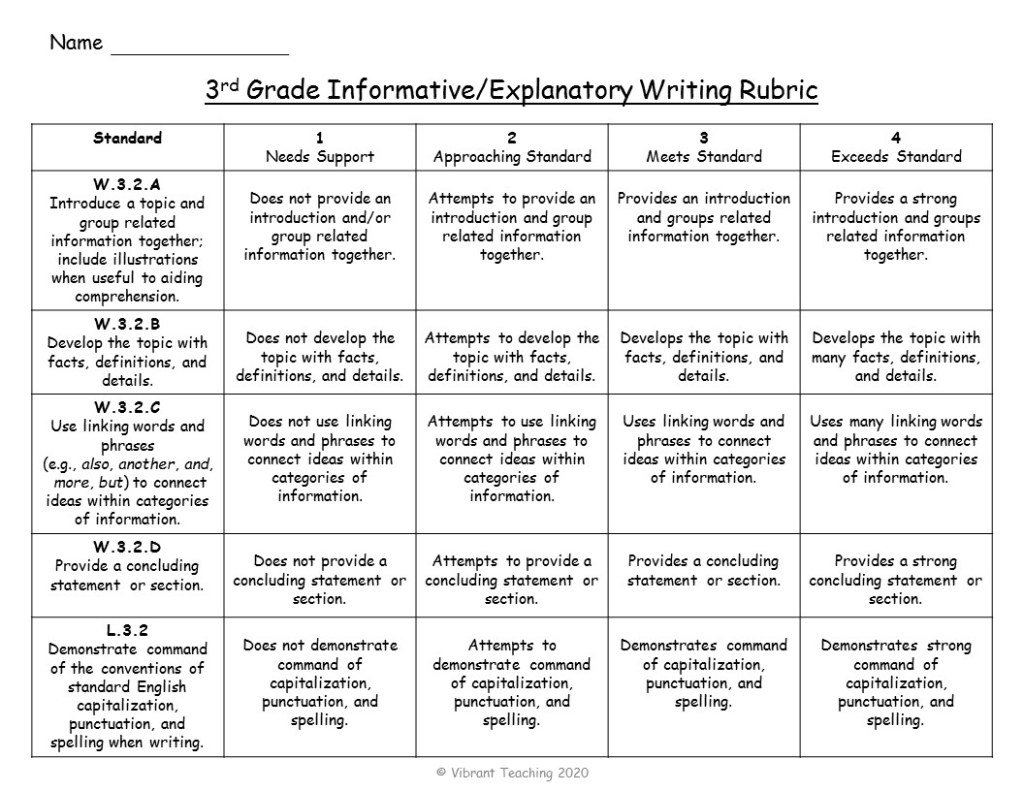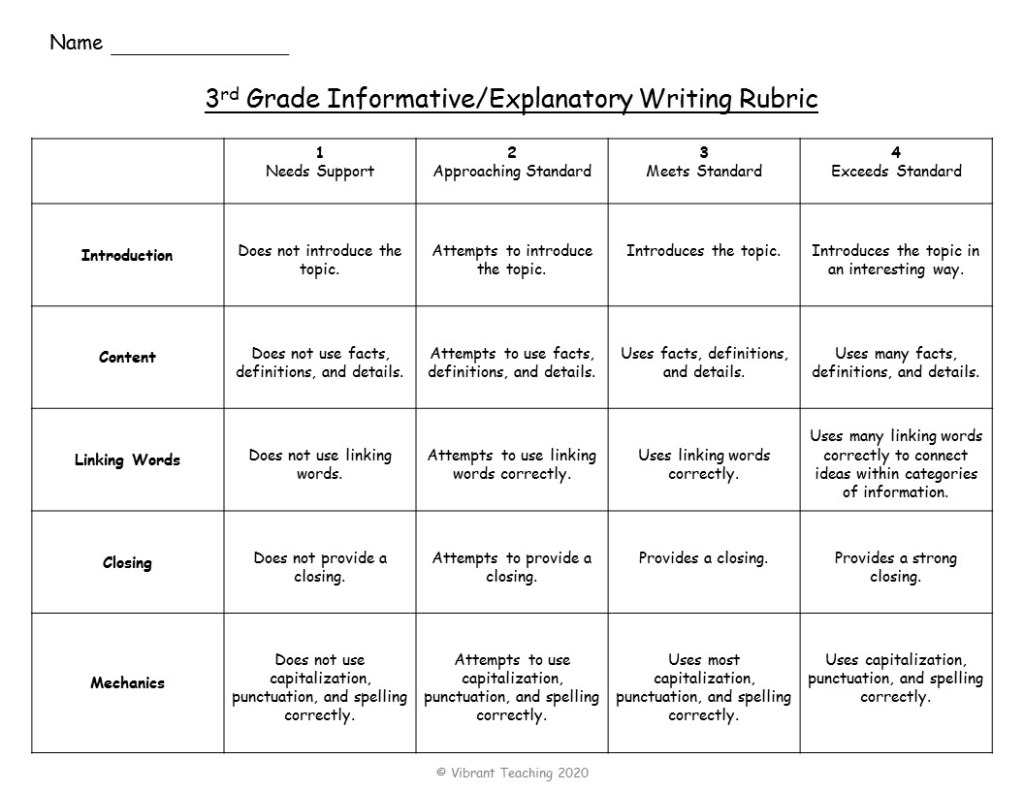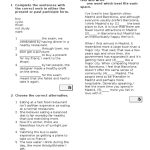Master The Art Of Writing: Unleash Your Creativity With The Ultimate High School Creative Writing Rubric!
Creative Writing Rubric High School: A Comprehensive Guide
Introduction
Dear Readers,
3 Picture Gallery: Master The Art Of Writing: Unleash Your Creativity With The Ultimate High School Creative Writing Rubric!



Welcome to our comprehensive guide on creative writing rubrics for high school students. In this article, we will explore the importance of rubrics in evaluating and improving students’ creative writing skills. Whether you are a teacher looking for effective assessment tools or a student aiming to enhance your writing abilities, this guide is here to provide you with valuable insights and practical tips. So, let’s delve into the world of creative writing rubrics for high school!
What is a Creative Writing Rubric?

Image Source: pinimg.com
In essence, a creative writing rubric is a scoring guide that helps assess and evaluate students’ writing assignments based on specific criteria. It provides a standardized way to measure the quality and effectiveness of their creative works, taking into account various elements such as content, organization, language usage, and creativity. By using rubrics, teachers can provide constructive feedback and students can understand their strengths and areas for improvement.
Who Benefits from Using Creative Writing Rubrics?
Creative writing rubrics are beneficial to both teachers and students. Teachers can use rubrics to establish clear expectations and criteria for grading students’ writing assignments. This ensures a fair and consistent evaluation process. On the other hand, students benefit from rubrics as they provide a roadmap for success. Rubrics help students understand the specific elements they need to focus on and guide them towards achieving their writing goals.
When Should Creative Writing Rubrics be Used?
Creative writing rubrics can be used throughout the high school curriculum. They are applicable to various writing assignments, including essays, short stories, poems, and creative projects. Rubrics can be used for both formative assessments, where students receive feedback during the writing process, and summative assessments, where final grades are given. By utilizing rubrics consistently, teachers can monitor students’ progress and provide targeted support.
Where Can Creative Writing Rubrics be Implemented?

Image Source: vibrantteaching.com
Creative writing rubrics can be implemented in both traditional classroom settings and online learning environments. They are versatile tools that can be customized to suit different teaching methodologies and curriculum requirements. Whether it’s a physical classroom or a virtual platform, rubrics provide a structured and objective framework for evaluating students’ creative writing skills.
Why are Creative Writing Rubrics Important?
Using creative writing rubrics offers several advantages. Firstly, they provide clear expectations and guidelines for students, reducing ambiguity and ensuring fairness in grading. Rubrics also promote self-assessment and reflection, encouraging students to become more independent learners. Furthermore, rubrics foster a growth mindset by highlighting areas for improvement and offering constructive feedback. Ultimately, creative writing rubrics facilitate the development of critical thinking, creativity, and effective communication skills.
How to Create an Effective Creative Writing Rubric?

Image Source: vibrantteaching.com
Creating an effective creative writing rubric involves several key steps. Firstly, identify the specific learning objectives and outcomes you want to assess. Next, determine the criteria that will be used to evaluate students’ performance in relation to these objectives. Common criteria include content, organization, language usage, creativity, and overall impact. Assign point values or scales to each criterion to quantify the assessment. Finally, provide clear descriptors or levels of proficiency for each criterion to guide the evaluation process.
Advantages and Disadvantages of Creative Writing Rubrics
Like any assessment tool, creative writing rubrics have both advantages and disadvantages. Let’s explore some of the main pros and cons:
Advantages:
1. Objectivity: Rubrics provide an objective and standardized way to evaluate students’ writing, minimizing bias and subjectivity.
2. Feedback: Rubrics offer constructive feedback, allowing students to understand their strengths and areas for improvement.
3. Clarity: Rubrics clearly communicate expectations, helping students stay focused and motivated.
4. Growth mindset: Rubrics promote a growth mindset by emphasizing progress and providing opportunities for self-reflection.
5. Consistency: Rubrics ensure consistency in grading, especially when multiple teachers are involved in assessing writing assignments.
Disadvantages:
1. Limited scope: Rubrics may not capture the entirety of a student’s writing abilities, as they focus on specific criteria.
2. Overemphasis on structure: Rubrics can sometimes prioritize structure and adherence to rules over creativity and originality.
3. Time-consuming: Creating and implementing rubrics can be time-consuming for teachers, especially when dealing with large class sizes.
4. Subjectivity in scoring: Despite their attempt to be objective, rubrics may still leave room for subjective interpretation, depending on how descriptors are applied.
5. Stifling creativity: Strict adherence to rubrics may limit students’ creative expression, inhibiting their imagination and unique writing style.
Frequently Asked Questions (FAQs)
1. Can rubrics be used for collaborative writing projects?
Yes, rubrics can be adapted for collaborative writing projects. In such cases, additional criteria addressing teamwork and cooperation can be included to assess individual and group contributions.
2. Are rubrics suitable for assessing all types of creative writing?
While rubrics are versatile assessment tools, they may need to be modified to suit different types of creative writing. For example, rubrics for poetry assignments might place more emphasis on language usage and imagery, while rubrics for essays may prioritize organization and argumentation.
3. How often should rubrics be used for assessing creative writing?
Rubrics can be used for both regular assignments and larger projects. It is recommended to use rubrics consistently to provide ongoing feedback and track students’ progress throughout the academic year.
4. Can students be involved in the rubric creation process?
Absolutely! Involving students in the rubric creation process can enhance their understanding and ownership of the assessment criteria. It also promotes a sense of autonomy and empowers students to take control of their own learning.
5. Are rubrics applicable to other subjects besides English or language arts?
Yes, rubrics can be adapted for other subjects as well. Whether it’s science experiments, history research papers, or art projects, rubrics can provide a structured evaluation framework across various disciplines.
Conclusion
In conclusion, creative writing rubrics are valuable tools for assessing and enhancing high school students’ writing skills. By providing clear expectations, constructive feedback, and a roadmap for success, rubrics empower both teachers and students in the learning process. While rubrics have their pros and cons, their overall benefits in promoting growth mindset, clarity, and consistency outweigh any potential drawbacks. So, let’s embrace the power of rubrics and embark on a journey of creative expression and self-improvement!
Final Remarks
Dear Readers, we hope this comprehensive guide on creative writing rubrics for high school has provided you with valuable insights and practical tips. Remember, rubrics are powerful assessment tools that can unlock your writing potential and enhance your learning journey. Whether you are a teacher or a student, harness the power of rubrics to nurture creativity, critical thinking, and effective communication skills. Happy writing!
This post topic: Creative Writing

